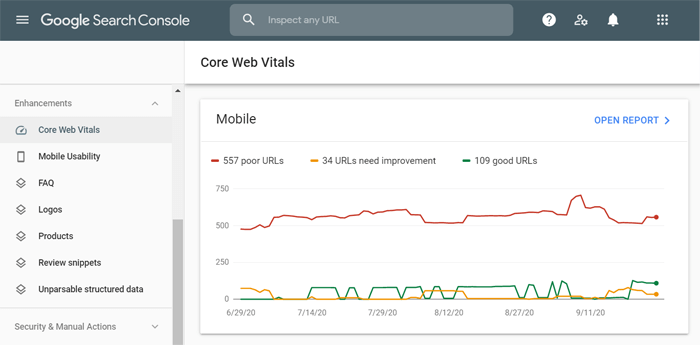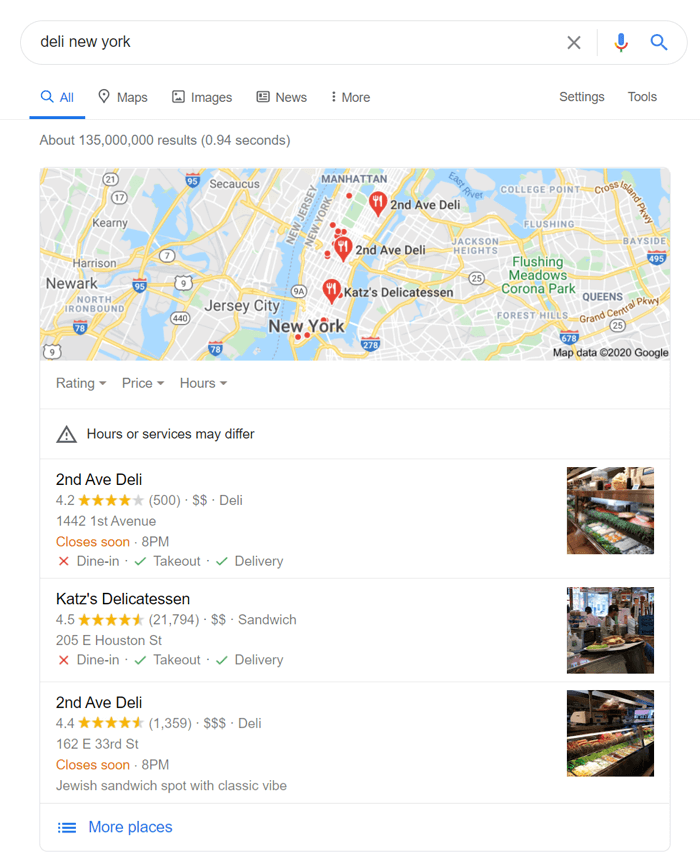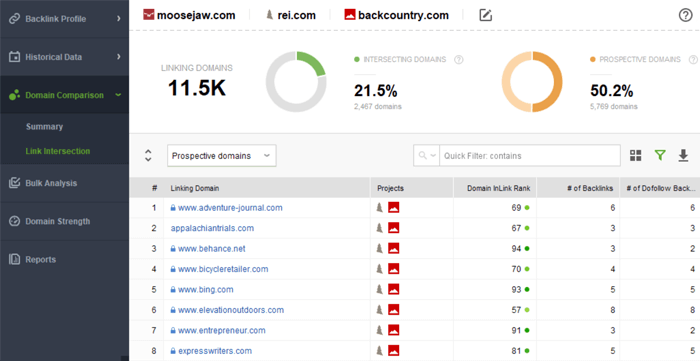30541
•
10-minute read


New websites are notoriously hard to rank. Some SEO experts even say that new sites can’t be ranked in Google until they reach a certain age. This is commonly referred to as the sandbox effect. Our brief SEO guide to the Google sandbox explains how to conduct a safe sandbox-free website launch.
The idea of Google sandbox dates back at least 15 years. At some point, SEO experts began noticing that it is much easier to rank a new website with Bing or Yahoo than it is with Google. This observation gave birth to the theory of Google sandbox.
The sandbox is believed to be a filter for new websites. The assumption is that the filter traps new sites and doesn’t let them rank until they reach a certain age. There is much debate about what this age is exactly. Some say it’s at least a month, while others claim that it could be a full year until your SEO efforts start to pay off with organic traffic.
There have been several waves of discussions where SEO experts attempted to debunk the sandbox myth or prove the existence of sandboxing.
In 2005 Moz's Rand Fishkin announced that Moz finally managed to escape the Google Sandbox. The sandbox period lasted for 9 months despite the strong naturally built backlink profile of the website.
In 2009 Rand Fishkin reexamined the probable existence of sandbox on another website grader.com. He compared the site's rankings on Google, Yahoo, and MSN/Live, and it turned out that the site’s Google rank was much lower than the ranks in the other two. Later, the site moved to another domain and started ranking easily with the same content and links.
This led Rand Fishkin to get his "final nail in the coffin of the "does the sandbox exist" coffin" leaving him with a focus not on proving the Google sandbox existence, but finding ways out.
When talking about the importance of domain age, Matt Cutts said back in 2010:
“My answer is not to worry that much. The difference between a domain that’s six months old versus one year old is really not that big at all. So as long as you’ve been around for a least a couple months, a few months, you should be able to make sure that you’re able to show up in the search results.”
Which some SEOs think could be interpreted as that same filter, although not called sandbox as such.
Google representatives have repeatedly denied that such initial sandbox penalty exists:

However, they do admit that new websites may indeed experience a sandbox effect. This is not, however, due to the young age of the website, but due to the lack of trust signals. A new website might be thin on content or lacking SEO authority, so it is hard for Google to determine its proper placement in search results. Here is the quote from the office hours with John Mueller dated February 23, 2018:

With regards to sandbox, we don’t really have this traditional sandbox that a lot of SEOs used to be talking about in the years past. We have a number of algorithms that... that might look similar, but these are essentially just algorithms trying to understand how this website fits in with the rest of the websites trying to rank for those queries.
So yes, a new website may be disadvantaged in search, but Google does not have a predetermined probation period called sandbox. Your website will be able to occupy top search positions as soon as it starts demonstrating proper trust and quality signals.
To be precise about what sandbox means, let’s agree that there is no in-built sandbox filter as such. However, new domains experience a kind of an undefined probation period before they prove their importance and earn Google trust.
Sandboxing looks in line with common anti-spam policies that Google has been trying to reinforce for longer than a decade. Google algorithms need time to evaluate the quality of brand new websites and fight spam.
For a newly registered website turning out to be in the sandbox, you will see that your pages are all crawled and Google knows about them. However, entering the keyword in the search bar, you will hardly find your website on main SERPs, not even on the first dozen pages, even if your titles and descriptions are well-optimized for the query. The pages won’t show up even for long-tail keywords with low competition.
Moreover, not all pages seem to be discoverable, only your homepage shows up for most of your target queries. Google won’t show other pages linking to yours in its organic listings.
One more clue to the Google Sandbox effect can be found by comparing how your pages stack up in search engines’ SERPs. If you notice significant discrepancies in positions across Bing vs Google, Yahoo vs Google, most likely the issue is on the search engine’s side, not only pages.
Assuming that the sandbox effect means the inability of a brand new website to rank high for its target keywords, we notice that different SEO specialists cite different time spans for sandbox duration, from a couple of months to a year or even longer.
The truth is, new domains are easy to get indexed but hard to rank. Getting your pages indexed by Google may take from a couple of hours to a few days. However, with a brand new domain, you can hardly rank overnight.
New domains have one major disadvantage: they lack domain strength to compete with long-existing websites. The only way out is to strengthen your site’s authority taking into account Google ranking factors and existing competition in the SERP.
It’s crucial to earn Google trust by building up a site’s E-A-T (Expertise, Authoritativeness, and Trustworthiness), one of the most important quality characteristics for the search engine. Here are the E-A-T guidelines for webmasters about what SEO aspects require special attention and how a site can stay immune to Google updates and not fall victim to Google algorithms.
If you want to push through the sandbox effect quickly, you have to come out of the gate running. As soon as your website goes live, double down on creating quality content and building links between your website and the rest of the web. Here are a few things that should be a priority when search optimizing a new website if you aim to treat sandbox effects:
Before you start building rapport with Google, make sure that there are no technical obstacles to ranking your website. Run a post-launch website audit and see if your website is search and user friendly.
First stop — make sure that search engines can access all of your important pages. To do this, launch WebSite Auditor and create a project for your domain name. The tool will immediately start an SEO audit of your website and, once it’s finished, provide you with a complete report of technical issues:

While there’s lots of useful stuff in the report, for now, we are concerned about how your pages have been crawled and indexed by Google. Scroll through the list of resources restricted from indexing and make sure that it does not contain any of the pages you want to appear in search.
Apart from content quality, Google is becoming increasingly concerned with user experience metrics. Google will be hesitant to rank your pages unless users are able to access the content quickly and interact with it easily.
To check whether all of your pages meet Google’s user experience standards, head over to your Google Search Console account. In the Enhancements tab, you will find two user experience reports: Core Web Vitals and Mobile Usability.

One of the recent Google updates deals with Core Web Vitals — a collection of three metrics all of which are more or less about page speed: how fast the elements load and how soon the page becomes interactive. Mobile Usability has more to do with the layout of the page when viewed on a mobile device, things like font size, button size, content width, etc.
Conveniently, if Google discovers any problems with your website, it will provide you with a list of offending pages, specific SEO issues, and even some advice on how to fix them.
Your chances of ranking increase dramatically as your website becomes more interconnected with the rest of the web. For a new website to shorten the sandbox period, the best approach to sourcing these connections is to get listed in relevant business directories.
The best way to prove to Google that you actually exist is to create a listing in Google’s own directory — Google My Business (GMB). Head over to the “create” page where you can tell Google about your business as well as verify your business ownership.
Once your verification goes through, you will be able to access your GMB dashboard, where you can fill out your profile with additional details. We highly recommend taking advantage of as many GMB features as you can — the more information you provide the more of an entity you become in Google’s database.

Apart from improving your overall credibility, a GMB profile will also make you eligible for local search results: local pack in the regular search and a pin in Google Maps:

Although to a lesser extent than GMB, other local directories may also contribute to your online visibility. There is no need to follow outdated SEO practices and create thousands of listings in every business directory imaginable — if you encounter this advice, disregard it. Instead, we suggest finding a few business directories that your potential customers actually use. It could be Yelp, or Foursquare, or Yellow Pages, or something much more local — limited to your state or your city. Go by whatever makes sense in your particular case.
Google feels more confident ranking pages that come from niche websites. And one of the best ways to demonstrate that you are an expert in a particular niche is to create lots of quality content on a particular topic. That’s why, especially in the beginning, it is important to create your content in clusters.
What it means is that instead of jumping from topic to topic, you should focus on one topic and cover it from as many angles as possible. For example, let’s say you are a bicycle retailer. A good content strategy for SEO would be to choose one aspect of biking and create a bunch of content on this aspect, then move onto the next aspect.
If you were to start with, say, gravel bikes, you would first create a pillar page — best gravel bikes. Then, you would surround this primary page with a cluster of secondary pages — how to choose a gravel bike, best gravel bike accessories, gravel bike vs mountain bike, gravel bikes under $1000, and so forth.
While behavioral signals are not cited among Google ranking factors, there’s been plenty of evidence to the contrary. It is believed that positive user behavior (visits, interactions, long sessions, comments, reviews, and social shares) may be of substantial help when trying to get Google to rank your pages.
In fact, we often see spikes in traffic when new pages are introduced to Google, and then it settles down and performs badly. The behavior with the spike for new content, be it individual pages or the whole new website, is called by some SEO specialists a honeymoon period. John Mueller dwelled on this feature in SEO office-hours in 2018 and reconfirmed in May 2021:
“In the SEO world, this is sometimes called kind of like a sandbox where Google is like keeping things back to prevent new pages from showing up, which is not the case.Or some people call it like the honeymoon period where new content comes out and Google really loves it and tries to promote it.And it’s again not the case that we’re explicitly trying to promote new content or demote new content. It’s just, we don’t know and we have to make assumptions. And then sometimes those assumptions are right and nothing really changes over time. Sometimes things settle down a little bit lower, sometimes a little bit higher.”
This implies that, based on user behavior signals, search engines are trying to figure out whether the pages correspond to the user intent and provide valuable content to the audience.
You obviously need some actual traffic and visitors to be able to display positive user behavior signals. And sourcing visitors for a new website could be a challenge. One thing you can do here is to capitalize on the momentum of launching a website/business and publish an announcement via local media, forums, interest groups, and your own social media accounts.
Design your pages in a way that encourages user interaction and invites users to stay for longer periods of time. A lot of this comes down to basic user experience features: segmented content, easy navigation, plenty of high-quality visuals, and no annoying pop-ups. The goal here is to make a good first impression and to move users down the page.
Another thing you can do is add elements that encourage your visitors to navigate to other pages of your website. A simple recommendation system should be able to do the trick: recommending posts or products based on the currently viewed content. This is where clustered content actually comes in handy — offering several angles on the same subject should make it relatively easy to move visitors from page to page.
And if you want to take it a step further, you can offer incentives for positive user behavior. For example, if you have a loyalty program, you can reward those users that leave reviews and comments on your website, invite their friends, or share your content via their social media.
One of the strongest Google ranking factors a new website can handle quickly is being backed by other, preferably better-established websites. Basically, the more websites link to your website, and the higher the quality of these websites, the easier it would be for Google to trust you.
The challenge here is to find quality websites that would be willing to accept your links. Especially considering that most SEO specialists out there are also competing for backlinks and the whole practice of asking for backlinks has long reached the utmost levels of annoyance for everyone involved.
Luckily, there is one SEO strategy that still works relatively well. The trick is to find those websites that already link to at least a few of your competitors. The fact that they link to your competitors means they are interested in your business niche, which naturally increases your chances of SEO success. But even better is the fact that they link to more than one of your competitors. It means that they do not have an exclusive relationship with any one company and will probably be open to more partnerships.
To find these backlink prospects, launch SEO SpyGlass, go to Domain Comparison > Link Intersection, and add a couple of your most immediate competitors. The tool will analyze all of your backlink profiles and generate a list of linking websites. The list is equipped with multiple sorting and filtering options, allowing you to view backlink gaps and backlink overlaps, to sort domains by SEO quality (InLink Rank) and by attributes (dofollow/nofollow):

Once you start building your backlink profile, SEO SpyGlass will also help you keep track of your progress. The tool logs gained and lost backlinks, as well as analyzes backlinks and their properties. This will come in handy if you suddenly lose some of the good links or gain some of the bad ones, which could have an immediate negative effect on your rankings because of an algorithmic Google penalty (remember that Penguin is now part of Google’s core algos).
Thinking over a new website launch, you may look at pre-aged or expired domains as an alternative to a completely new domain name. You can make use of not only the domain's age but also its backlink profile accumulated with the previous owner.
However, you’ll need to make sure that it’s not under an anti-spam filter or any other Google penalty. You can check the domain’s earlier content with the Wayback Machine archive (or some of the best Wayback Machine alternatives) and examine its backlink profile with a site checker like SEO SpyGlass. Here is a short SEO guide on how to pick expired domains correctly.
Another way to create connections between your website and the rest of the web is to link your content to high-quality sources. Now, this is considered to be a very minor ranking signal that has nowhere near the power of backlinks, but every little counts when you are building your initial SEO authority.
Furthermore, this SEO strategy can be implemented at no cost and with very little effort. All you have to do is create opportunities to link your content to high-authority external sources. Basically, whenever you create a piece of content, find a way to quote a recognized expert, reference a paper from a respected organization, or link to a Wikipedia article.
This doesn’t have to be limited to blog posts also. If we are talking about product pages, you could include links to popular external reviews of the product, promotional videos, or supplier/manufacturer sites. If we are talking about the main page, you could include testimonials from your clients or partners.
I hope this article helps you get a general understanding of what Google sandbox means and what is the right way to start a new website without fears of getting under any Google sanction.
When faced with the sandbox effect, the idea is to blast Google with a jillion of convincing trust signals. While there are quite a few things you can try to minimize the Google sandbox effect, I’d say that a well-planned SEO strategy, targeted content, and a link-building campaign should be your top priorities.
Have you ever made your way out of Google sandbox? How long did it take your new sites to start ranking? Please tell us in the comments!